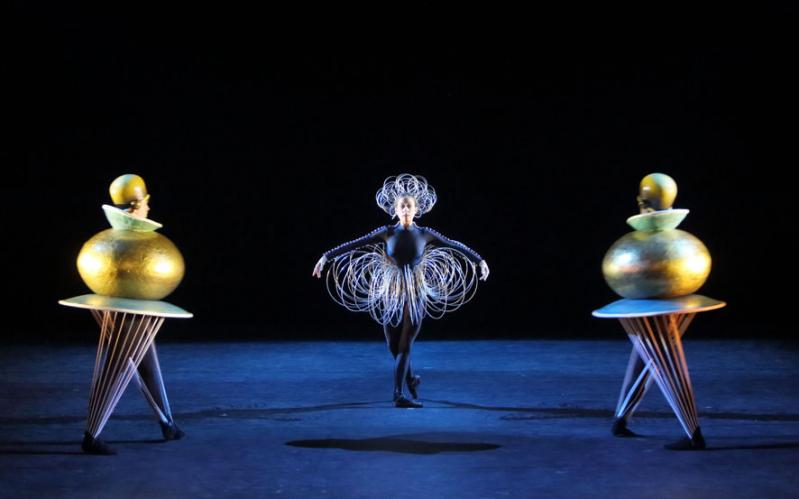Few pieces of dance choreography have taken on such iconic status that they can be identified from a single still image, even by people outside of the dance world. But Oskar Schlemmer’s Triadic Ballet is an exception. Famed for its colourful, quirky body morphing costumes that transform the dancers into automaton like figures, this piece from the 1920s is a staple of contemporary dance history. That is why I felt so privileged to see it restaged as part of the 100-year anniversary of Bauhaus, at the Akademie der Künste in Berlin.
Performed by the Junior company of the Bayerisches Staatsballet in Munich, and with choreography by Gerhard Bohner’s original restaging from the 70s, watching the Triadic Ballet is like being taken back in a time machine to possibly one of the most intriguing (at least for me!) eras of dance history. Of course the costumes (recreations of those made for the 1977 restaging) took pride of place, and each scene in the show beginning with the dancer standing still to allow the audience to digest the otherworldly being they see before them.

From barbed wire skirts to elastic banded legs, bulging circular tutus to spiralling optical illusions, the company look more like a zany collection of liquorice all-sorts than the cast of a historic contemporary dance piece. Kudos must be given to the performers who adeptly execute complex movemnts whilst inside these sculptural suits, especially those whose arms are encased, undoubtedly making turns and balances extremely challenging.
As you spend more time observing these creative costumes, you also come to deeply understand what Schlemmer was exploring, and realise that the outlandish outfits are to facilitate an exploration of the human body, space and geometry, rather than to just create a humorous spectacle. This is particularly evident with one costume constructed of painted wooden panels, making the dancer look like a puppet and breaking his body down into individual shapes. As the wooden “limbs” clatter against each other in accordance with his movements, the eye is drawn to the way they all interconnect, like joints, making you aware of Schlemmer’s deep interest in the form of the human body, and how it can be manipulated to create a unique kunstfigur (art figure).

The most surprising feature of the piece, however is its humour, joy and humanity. Whilst many scenes take on a mechanical, technological feel, and the dancers are often referred to as dehumanised automatons, there are also flashes of comedy and emotional relationships between them. For example, in one scene, a male dancer is joined by a girl with a ballooned, gobstopper-esque skirt, who he falls dramatically in love with. They begin to dance together, their duet littered with kitsch, over the top hugs, only for another male dancer – with a BIGGER costume – to appear and fight for her affections. Discovering moments such as this gave me a new perspective on Schlemmer’s seminal ballet, proving that even “serious” hallmarks of dance history can have a sense of humour, and that there is always something new to discover in revisiting age old classics.
Reviewed on 22nd of January at Akademie der Künste during 100 Jahre Bauhaus


